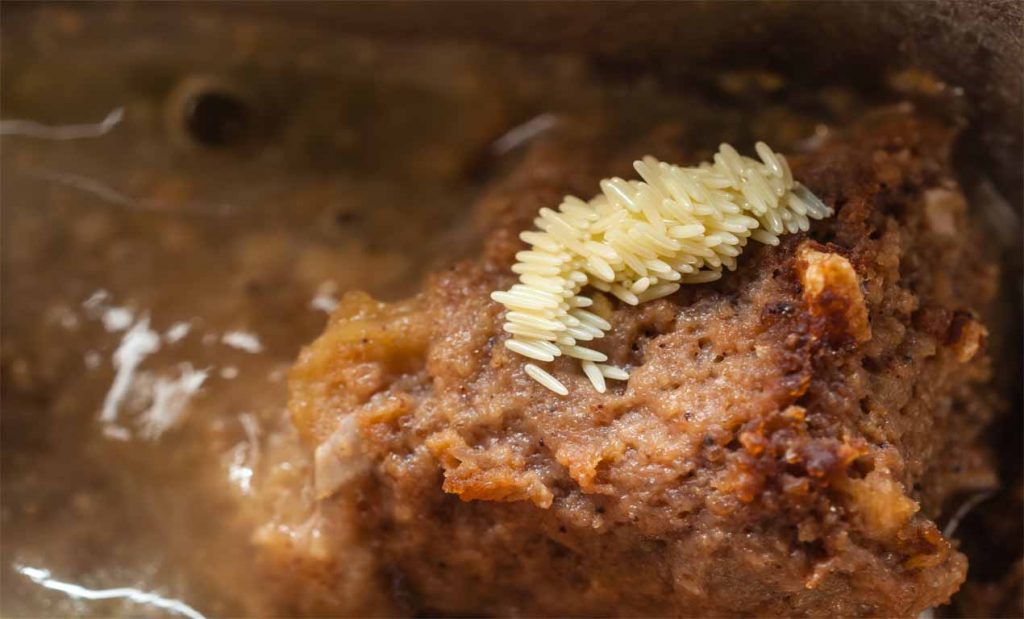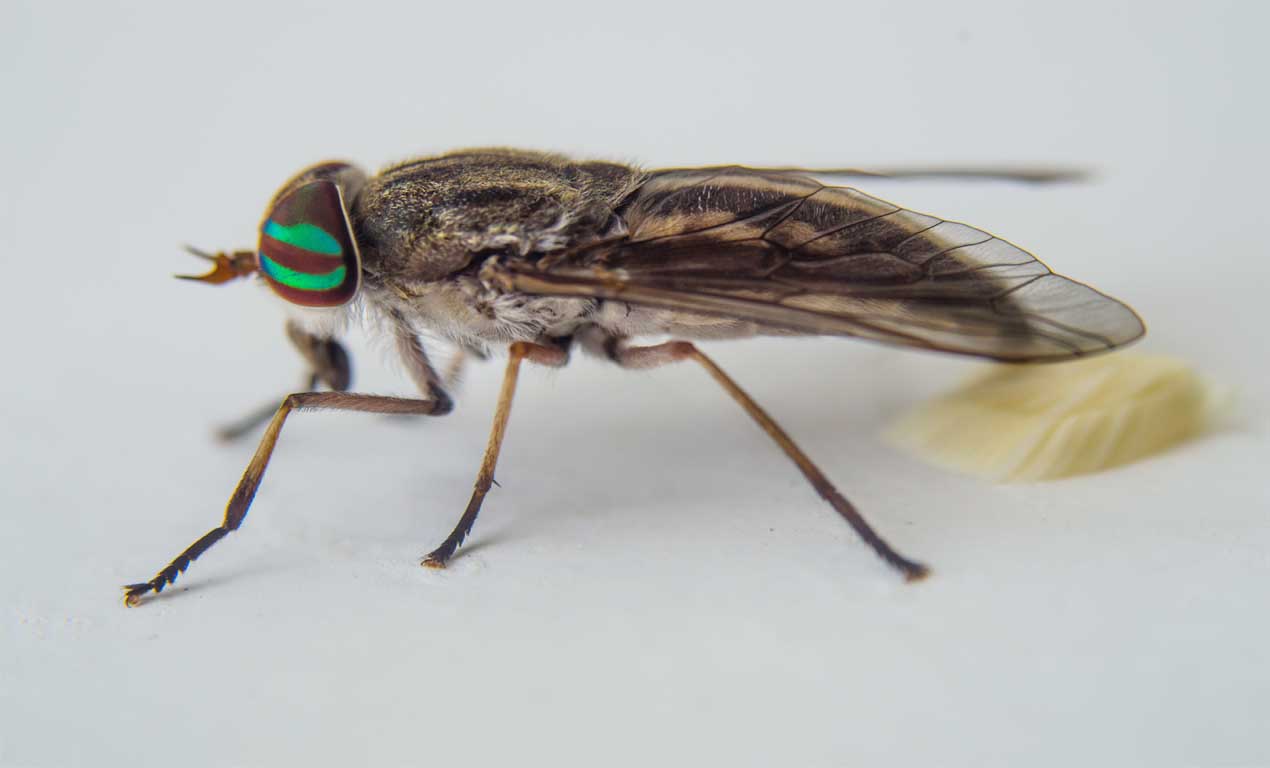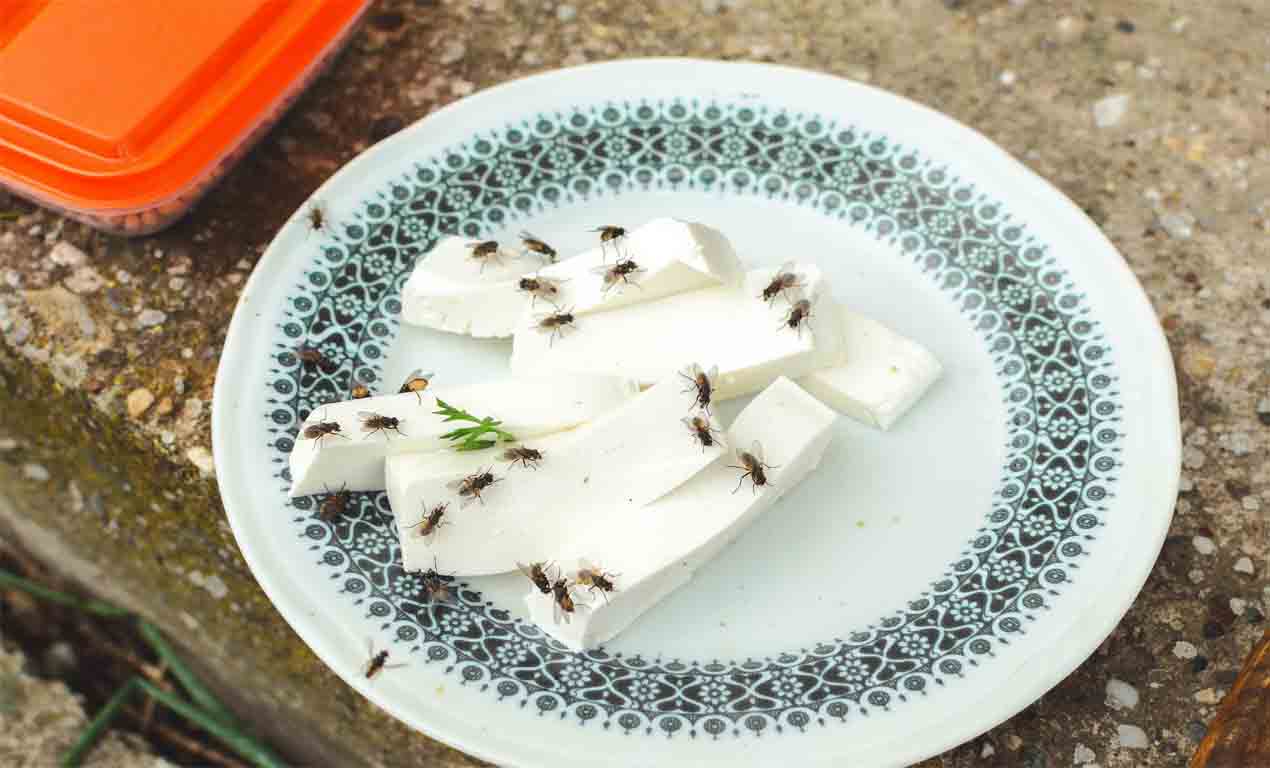
 Housefly eggs are where the problem begins. These small eggs, which we often overlook, will create issues as these eggs hatches and flies are born. The more eggs there are, the more flies will be born, which means more disturbances and the increased chances of diseases. To stop that problem, the first and foremost thing that you need is to learn about their eggs, i.e., how they look and where you can find them; secondly, you should know how their larva looks. Identifying these two will stop the problem from growing in the first step.
Housefly eggs are where the problem begins. These small eggs, which we often overlook, will create issues as these eggs hatches and flies are born. The more eggs there are, the more flies will be born, which means more disturbances and the increased chances of diseases. To stop that problem, the first and foremost thing that you need is to learn about their eggs, i.e., how they look and where you can find them; secondly, you should know how their larva looks. Identifying these two will stop the problem from growing in the first step.
If you see too many of these eggs and larva, then immediately ask for professional help. You can also try some home remedies that will get rid of them or decrease their number to a significant amount.
Musca Domestica Linnaeus or common housefly gets found the world over, near the human habitat. We see them inside the home, garden, ranch, or farm. They get attracted to human food and surrounding filth. They are a health concern to humans since they are pathogen carriers to over a hundred known diseases. Some common illnesses that get spread by houseflies are cholera, dysentery, typhoid, conjunctivitis, and tuberculosis.
The housefly has a complete life-cycle like most other insects. They have distinct eggs, which hatches into larvae or maggots, to the pupal stage, where the metamorphosis gets competed, and the young adult emerges. The housefly overwinters either during the larval or pupal stage, in protected areas like under a manure pile or rotting vegetation. Summers is most conducive for them to breed.
During warm weather, they complete their life-cycle within seven to ten days. If the weather is not favorable, this cycle may extend up to two months. Annually ten to twelve generations of houseflies get created in temperate regions. Over twenty generations get developed in subtropical and tropical climates.
The Eggs Of Houseflies

Female houseflies lay around 500 eggs during their lifetime. They lay their eggs in batches of 75-100 and can lay four to six times. They mate only once and collect enough sperm to store and fertilize all their eggs. Males impregnate multiple females with his sperm during his life span. Males are sexually mature after 16 hours from birth, while a female reaches maturity in one day!
Copulation:Females secrete pheromone on their body surface. Males get busy searching for females with such secretion. They bump into these female flies on air or land. Once they have identified such a female, it’s called a ‘strike.’ The male checks the females’ intention by licking her head or spreading her wings. If the female flutters her wing in acknowledgment, the male jumps on to her back. He presses her abdomen for her to reveal the ovipositor, in which he injects his sperm from the genitalia region. This courtship is a long drawn process and can last between a few minutes to almost half an hour duration.
Laying:Female houseflies require protein for the formation of her eggs. She then hunts around for a suitable space to lay her eggs. These eggs need enough moisture and warmth to hatch, and the emerging larvae, who are legless, require enough food in their surroundings to grow into their pupa stage. Hence, finding the right spot is significant for a female fly.
A heap of dung, garbage deposit, or decaying organic site are most appropriate for egg-laying. Females lay one egg at a time, about one centimeter deep. Clusters of these eggs get laid in such a location. They also are known to invite other female flies to lay their eggs alongside. They do not look after these eggs but fly away to look for another site to deposit the next batch of eggs!
Eggs: The eggs of houseflies are shiny white and around 1mm long. They are slightly curved and elliptical, tapering on one end, while roundish on the other. Each of these eggs has longitudinal rib-like ridges or thickening in two places along the surface of the eggs.
Between eight to twenty-four hours, larvae develop in each of these eggs, provided the environment is suitable. The larvae hatch out from a long slit along with the egg case, when they are ready. If the egg surface is not moist, they will not hatch. These eggs look like a small grain of rice.
Maggots: If the atmosphere is right, the first stage larvae emerge from each of these shiny white eggs. These larvae or grub are pale white, with a tapered mouth, cylindrical body, and roundish posterior. They have a black pincer shaped hooked mouth for feeding. They are a voracious eater and feed on the organic matter around them.
They are legless, and their mouthpart helps them to wriggle forward. Their exoskeleton molts twice, to form instar larval stage two and three. Every time they molt, they grow more significant to around 7 to 12mm in length. This creamy, slimy maggot slides to a relatively dry area to pupate, using its own molted exoskeleton skin. In optimal temperature, the larval stage lasts from four to thirteen days.
Adult: This cocoon-like pupa stage remains for around two to six days. This bluntly rounded on both end pupa case turns its color from yellow, red, brown to black. The metamorphosed fly uses a temporary bump, known as ptilinum, on its head to break open the pupal case and emerge. This fly is around 6 to 7mm long, with females slightly larger than males. They are pale when born, and wings are limp. Soon, they gain enough strength, wings open up, and they fly away.
Adult houseflies live for a brief period of one to two months. They are busy during this short period to feed, copulate, reproduce, and another generation of flies gets created. Due to their lifestyle and dread concerning the spread of diseases among humans, housefly management is a sought after activity to keep them at bay.
How Do Houseflies Spread Diseases
 They spread diseases in three ways:
They spread diseases in three ways:
Mechanical: Most of the illnesses get spread with their body parts, especially their feet. They land at various surfaces, including filth and open wounds. The pathogens present cling on to their suction pads and hairy body and legs. These bacteria can live for around 36 hours outside their host. This then gets deposited on human food and body parts.
Vomit: Flies tend to vomit digestive juices on hard food to soften them up and feed. If the fly is infected by any bacteria, picked up en route, they travel thro’ this vomit onto the food. The bacteria remain active for over a week in this secretion.
Feces: Houseflies are prolific defecators. They defecate while in motion or while sitting on your food. The bacteria ingested from other filth sources passes thro’ their digestive system intact and get found in their feces. This gets passed on to the food of humans, who unknowingly eat their food along with the germs.
Conclusions
Houseflies breed more than a dozen times a year. A female lays over 500 eggs during her lifetime of around thirty days. A single copulation is sufficient for her to fertilize all her eggs. These shiny white eggs get laid singly in the moist warm surface, slightly burrowed. They hatch into larvae within a day, if the environment is just right!
Welcome to my blog. I have been doing pest control for years since my house, garden and pets were always attacked by various kinds of pests and as a result I had to know proper pest control techniques that works. In this blog I share all the tips and tricks that I know and I hope you’ll find it helpful.
